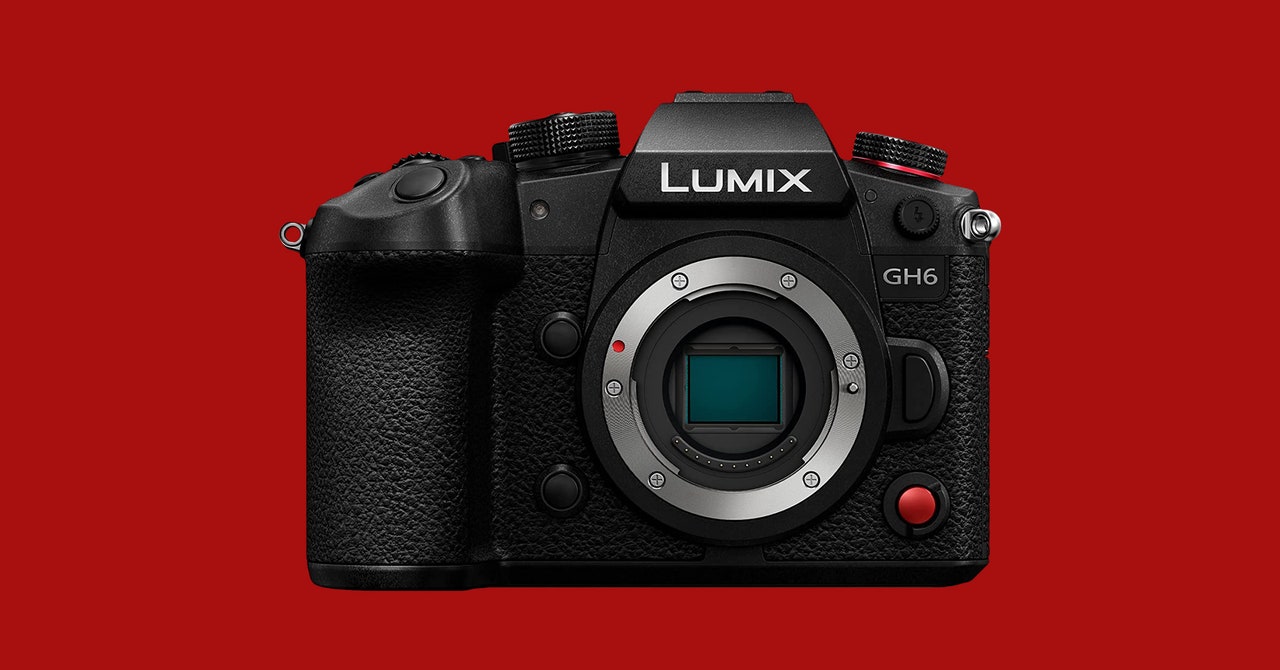Panasonic’s high-end mirrorless cameras have been the go-to for independent and documentary filmmaking for years. In 2017, Panasonic introduced the original GH5, the flagship model that took three years to build. It was speedy, rugged, and easy to use—a massively popular, clear standout in the market.
A lot has changed since then. Other manufacturers are now building great cameras for filmmakers that can shoot 6K footage. But the new GH6 continues to hold its own for videography and photography alike, especially at this price point.
Dashboard
There’s a surprising amount of heft to the GH6 but not so much that it becomes a wrist strain. It comes with a UHS-II SD card slot as well as a CFexpress card slot, which becomes necessary for higher-end video shooting (more on that below). Its three-inch flip-out screen can be rotated so it’s visible to the subject of the camera, making it handy for online content creators who have to be their own production team.
For run-and-gun photographers and filmmakers, the body is built for functional muscle memory. Alongside typical layouts like the white balance, ISO, and exposure compensation buttons along the top, or dials to control things like aperture without taking your hand off the body, there are also multiple red buttons for recording video. There’s one button on the top plate and another on the front. You can start recording footage, no matter which photo mode you’re currently in.
The material on this camera has some of the most satisfying tactile feedback I’ve encountered on a camera. Its design isn’t that far off from many other cameras like it, but the distinction is in the subtleties. For example, the audio information button along the top is rubberized, which gives it slightly more friction than the machined metal video button right next to it. Once you’re familiar with the layout, little details like this make it easy to tell exactly which button or dial your finger is on without looking.
Photographer: Panasonic
The kit comes with a slightly better-than-standard f/2.8, 12–60mm variable focal length lens. It also includes optional Power OIS, which, combined with the in-body image stabilization, makes the whole system impressively smooth, even when freehanding shots. Inside, the GH6 packs a 25.2-MP Micro Four Thirds sensor. It’s a little on the small side, but it works well enough for this camera.
Battery life, unfortunately, is middling. A fully charged battery will last about an hour of continuous usage, whether that’s photos or 4K video. However, that could be substantially less, especially if you rely on Apple ProRes recording. Conveniently, however, you can charge the battery using the device’s USB-C port. If it can supply enough power (around 9V/3A), then you can operate the camera off USB-C power. Still, you might want a spare battery or two.
Balance and Focus
The Lumix GH6 feels like it expects you to use it while on the go. The level gauge overlay display has a built-in accelerometer to display lean and tilt, turning green when you’re as level as can be. This is the kind of feature that is unnecessary if you have a good tripod or gimbal, but if all you can bring with you is your camera and your feet, it’s a handy tool.
The camera uses contrast-detection autofocus. This type of autofocus is increasingly outdated, but at least the GH6 does well with it. A blue overlay will highlight the areas of the image that are in sharp focus, and repeatedly pressing the autofocus button can (sometimes) switch between different subjects in focus.
When rotating the focus lens manually, a gauge pops up indicating the focal distance and, crucially, which direction you’re moving the focus. This is the kind of extremely handy feature that’s hard to do without once you have it—no more guessing whether you’ve over- or under-shot the focus.
Options Upon Options
The GH6 came with an already impressive range of video recording options, and a firmware update in late July added even more. The star of the show is the addition of Apple ProRes 422 and 422 HQ. Depending on your storage media, you can shoot up to 5.7K video at 30 fps in ProRes 422 HQ, one of the best compressed codecs you can use without diving into studio-level cameras. This is particularly handy for filmmakers looking to edit for 4K output.
Storage media matters because, for certain video settings, the SD card you have laying around probably won’t cut it. Most typical SD cards max out at around 300MB/s read speeds, but their write speeds can often be much lower. For example, this 128-GB SD card tops out at around 120 MB/s when writing and is usually on sale for about $36. Meanwhile, a 128-GB SD card that dog record at the nearly 240 MB/s required for 5.7K ProRes footage costs around $120, at the time of writing.
.
